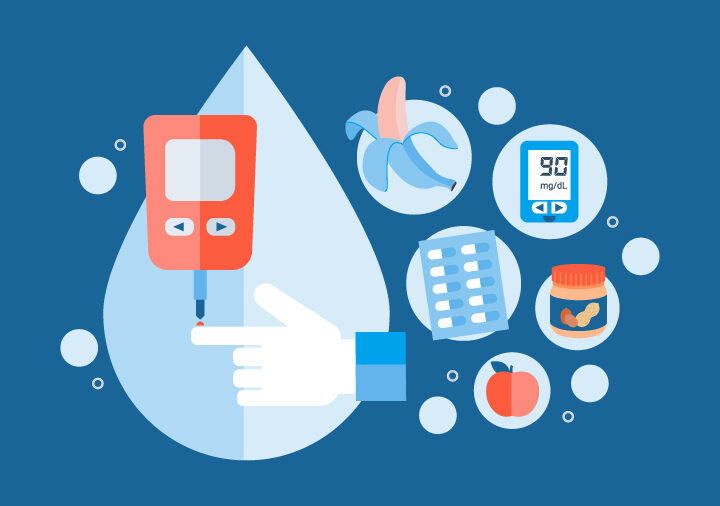
Your cart is currently empty.

Most people know the medical condition associated with chronic excess sugar in the blood, also known as diabetes. Of course, those who test positive for diabetes must diligently manage their blood sugar levels, neither going too high nor too low. This latter scenario, also known as hypoglycemia, or low blood sugar, can be as severe as having too much sugar. Some hypoglycemia symptoms (confusion, dizziness, fainting, coma) can lead to accidents or even more serious consequences.1
Some people may be surprised to learn that non-diabetics can also experience hypoglycemia. Low blood sugar can also be caused by other factors such as: drinking too much alcohol, certain hormone deficiencies, pancreatic tumors, and other health conditions such as advanced heart disease, severe infection, and kidney disease.2
Whether a person has diabetes or hypoglycemia for other reasons, it’s essential to learn how to eat the right foods to keep blood sugar levels as stable as possible. Staying balanced with the right foods is one of the keys to optimal health.
When a person is experiencing low blood sugar levels, they do need to raise them, but not to the point where the pendulum has swung too far the other way. The primary goal should be to eat foods that raise blood sugar levels back to within a normal range while avoiding those foods known to cause excessive spikes in blood sugar levels.
Some of the best foods to eat to raise blood sugar levels back to normal levels include:
While it might be surprising to see “high-sugar” foods such as bananas, honey, and raisins on the list, these foods also contain high levels of fiber. Fiber helps to moderate the effects of the sugar in these foods by slowing down the digestive process, which, in turn, allows blood sugar levels to increase at a steady pace. High-protein foods and complex carbohydrates are good choices, as they also take longer to digest.
Glucose tablets may seem like an odd choice, but this supplement is specially designed to treat low blood sugar.3 In addition, the glucose in the tablets is pre-measured, so it’s easier to control the process of raising blood sugar levels back to normal.
When a person is experiencing low blood sugar, it’s essential to get their blood sugar levels back to normal steadily. Unfortunately, the following foods do just the opposite. They are very fast-acting, and they can cause unhealthy spikes in blood sugar — ultimately raising blood sugar levels too high. In addition, if you’ve ever had a candy bar to counteract an afternoon slump, you’re probably familiar with its sugar “high” that is quickly followed by a sudden drop in blood sugar often called a “sugar crash”.4 This type of crash will promptly lead a hypoglycemic right back to where they started. Recovery from a hypoglycemic episode means avoiding:
Energy drinks are loaded with caffeine. Caffeine interferes with the hormone insulin, which helps regulate blood sugar levels. Alcohol also interferes with a person’s insulin levels and their insulin medication in the case of diabetics. Not only does alcohol interfere with insulin, but many alcoholic drinks also contain large amounts of sugar, which causes sugar in the bloodstream to spike to unhealthy levels.
Managing hypoglycemia by using the right foods is much easier when one understands that moderate and steady is how to obtain/maintain normal blood sugar levels. Foods that cause high spikes in blood sugar only lead to an inevitable crash shortly afterward. Keeping portable, hypoglycemic-friendly snacks on hand can go a long way when maintaining healthy blood sugar levels.
“Hypoglycemia.” Mayo Clinic. May 4, 2022. https://www.mayoclinic.org/diseases-conditions/hypoglycemia/symptoms-causes/syc-20373685.
Mary Jo DiLonardo. “Hypoglycemia (Low Blood Sugar).” Web MD. June 22, 2021. https://www.webmd.com/diabetes/hypoglycemia-overview.
“Glucose chewable tablets.” Cleveland Clinic. Accessed May 24, 2022. https://my.clevelandclinic.org/health/drugs/18081-glucose-chewable-tablets.
Karen Hovav, MD, FAAP. “Can You Really Have a ‘Sugar High’ or a ‘Sugar Crash’?.” July 27, 2021. GoodRx Health. https://www.goodrx.com/well-being/diet-nutrition/are-sugar-high-sugar-crash-real.